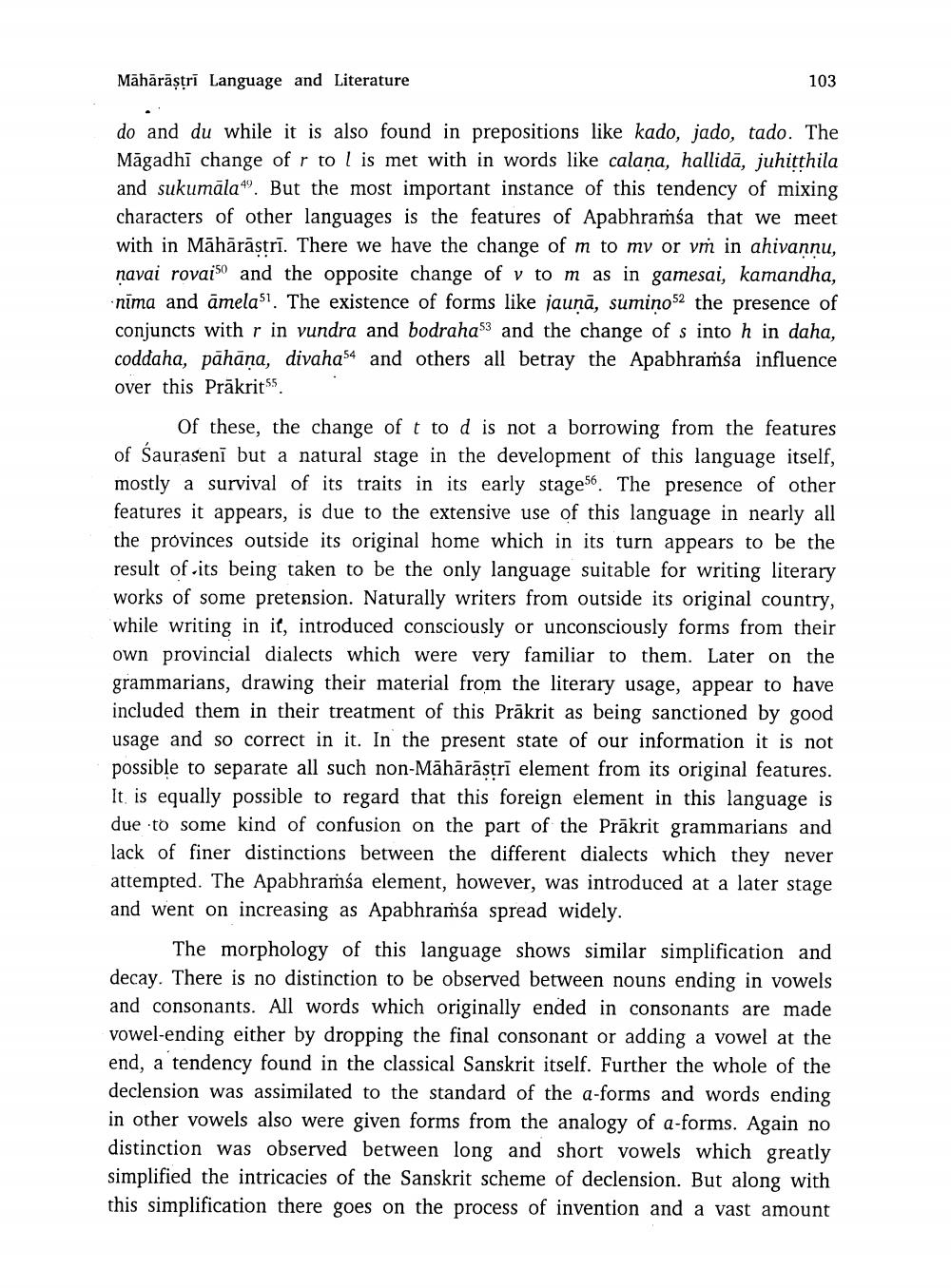________________
Māhārāștri Language and Literature
103
do and du while it is also found in prepositions like kado, jado, tado. The Māgadhi change of r to l is met with in words like calana, hallidā, juhitthila and sukumāla49. But the most important instance of this tendency of mixing characters of other languages is the features of Apabhramba that we meet with in Māhārāstrī. There we have the change of m to my or vṁ in ahivannu, navai rovais" and the opposite change of v tom as in gamesai, kamandha, nima and amelast. The existence of forms like jaunā, sumino52 the presence of conjuncts with r in vundra and bodraha53 and the change of s into h in daha, coddaha, pāhāna, divaha54 and others all betray the Apabhraṁsa influence over this Prākrits
Of these, the change of t to d is not a borrowing from the features of Saurasenī but a natural stage in the development of this language itself, mostly a survival of its traits in its early stage56. The presence of other features it appears, is due to the extensive use of this language in nearly all the provinces outside its original home which in its turn appears to be the result of its being taken to be the only language suitable for writing literary works of some pretension. Naturally writers from outside its original country, while writing in it, introduced consciously or unconsciously forms from their own provincial dialects which were very familiar to them. Later on the grammarians, drawing their material from the literary usage, appear to have included them in their treatment of this Prākrit as being sanctioned by good usage and so correct in it. In the present state of our information it is not possible to separate all such non-Māhārāstri element from its original features. It is equally possible to regard that this foreign element in this language is due to some kind of confusion on the part of the Prākrit grammarians and lack of finer distinctions between the different dialects which they never attempted. The Apabhramsa element, however, was introduced at a later stage and went on increasing as Apabhramśa spread widely.
The morphology of this language shows similar simplification and decay. There is no distinction to be observed between nouns ending in vowels and consonants. All words which originally ended in consonants are made vowel-ending either by dropping the final consonant or adding a vowel at the end, a tendency found in the classical Sanskrit itself. Further the whole of the declension was assimilated to the standard of the a-forms and words ending in other vowels also were given forms from the analogy of a-forms. Again no distinction was observed between long and short vowels which greatly simplified the intricacies of the Sanskrit scheme of declension. But along with this simplification there goes on the process of invention and a vast amount




